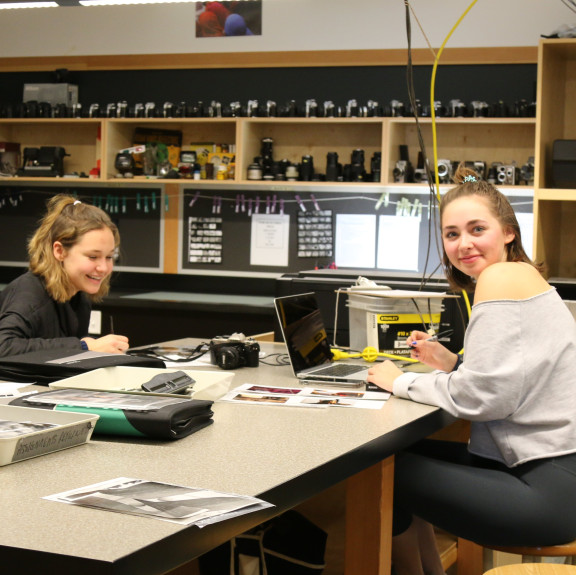50p

The Ones Who Enjoy Holding Unto History
Traditional film photography should have died years ago. It could have gone extinct in 1995 when the first digital camera was released by Kodak, but surprisingly, it didn’t. The flawless idea Nikon, Kodak, Canon and many other camera companies had about digital cameras was just another human invention. They thought it would be another astute innovation that would lead humankind towards the next step of what some call “The Photographic Evolution.”
Here is a brief history lesson: Traditional photography started around the year 1934 when Kodak introduced the first 8mm amateur motion picture film, cameras, and projectors. The learning started with how to properly reel film into a camera, how to hold the camera correctly, how to develop the 35mm film in a pitch-black dark room, how to print the images under the powerful smell of all the different chemicals.
Traditional Film Photography is not only an art, it’s a science. Digital photography is just an art since the device is remarkably modern. If the camera is already on the automatic function, the hardest part of shooting is clicking a button. Digital photography is fun, but digital photography is not as entertaining and mysterious as traditional film photography. For traditional photographers to see the finished product, they’ll have to wait until the 36 images are taken, for the film to be developed and dried, and lastly, to print it.
Of course that can be extremely stressful sometimes, but that’s why it’s such an entertaining and mysterious art. There is a reason why some people choose to stay with traditional black and white film photography rather than moving on with digital. Many photographers might say that they choose film because it’s more artistic and more classy. Others say that digital photography is just too complicated. A great photography instructor named Mr Paul Fletcher once said that he prefered “traditional photography over digital photography because traditional links with the past and the art of photography, and all the important photographers that contributed to the way photography is today.”
Photography has a way with people: it’s magic. It’s a combination of graphic simplicity and the power of spirit and soul. It’s design. It’s like a secret that won’t be revealed until the film has dried after it has been developed. As Deanna C, Mack ‘20 said, “Traditional photography is an authentic way to capture an incredible moment. Learning how to use a traditional camera is beneficial because it’s all manual.” Just by holding the camera you feel all the energy, all the historical events that camera has shot for, maybe, a local newspaper. As the actual picture is being taken, there is a sudden flash back to the 1970s. The feeling of being a photojournalist stikes the soul of the person holding the camera. The elegance and the attraction the traditional camera has is inexplicable, undefinable and irreplaceable; not even the most modern camera will be able to replace that amazing feeling of pure gratitude.
Thankfully the Brentwood Art Program offers both, starting with the incredible traditional teachings to the amazing process of digital photography using specific digital programs for editing and printing. The program, directed by Mr. Fletcher, is an incredible opportunity to learn all the most important features in photography, both traditional and digital.
Lucila G, Hope, ‘20